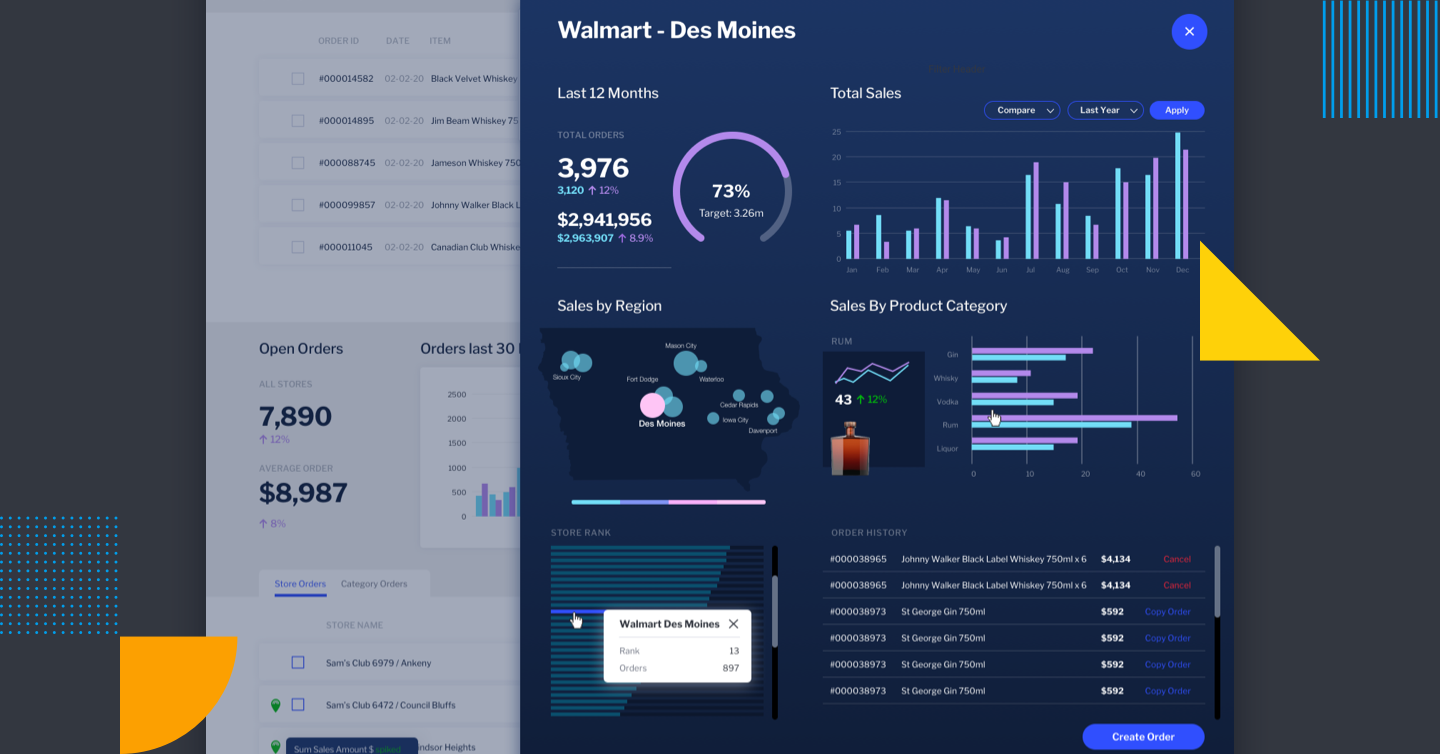
What is Contextual Analytics?
As a product feature for your app, embedded analytics is undoubtedly a valuable tool.
But historically, many product managers and software developers have approached it as a standalone capability. This has led to dashboards and reporting modules added as an afterthought, rather than as a founding strategic component of the core application.
Because analytics is provided as a separate tool, users have to stop what they’re doing in your software and switch contexts to find data they need and make effective use of analytics. As a bolted-on function, it can lag behind where your users' needs are today.
To be clear, this approach of embedded analytics is still very valuable. Your users can still get the context needed to support their decision-making - it’s just not necessarily easy for them when analytics tools are separated from the rest of what they do in your app.
This separation of core functions and analytics has led to some long-term limitations:
- Users must switch contexts or navigate to a separate dashboard module to find the information they need to act, breaking up and being disruptive to their workflow.
- Stand-alone dashboards don't provide context or guided analysis; instead, users have to manually look for changes or trends or anomalies in their data, which is time consuming and subject to human error and data fatigue.
- Embedding a separate dashboard module creates some friction in the user experience, and does not guarantee that all users will use it or gain value from it.
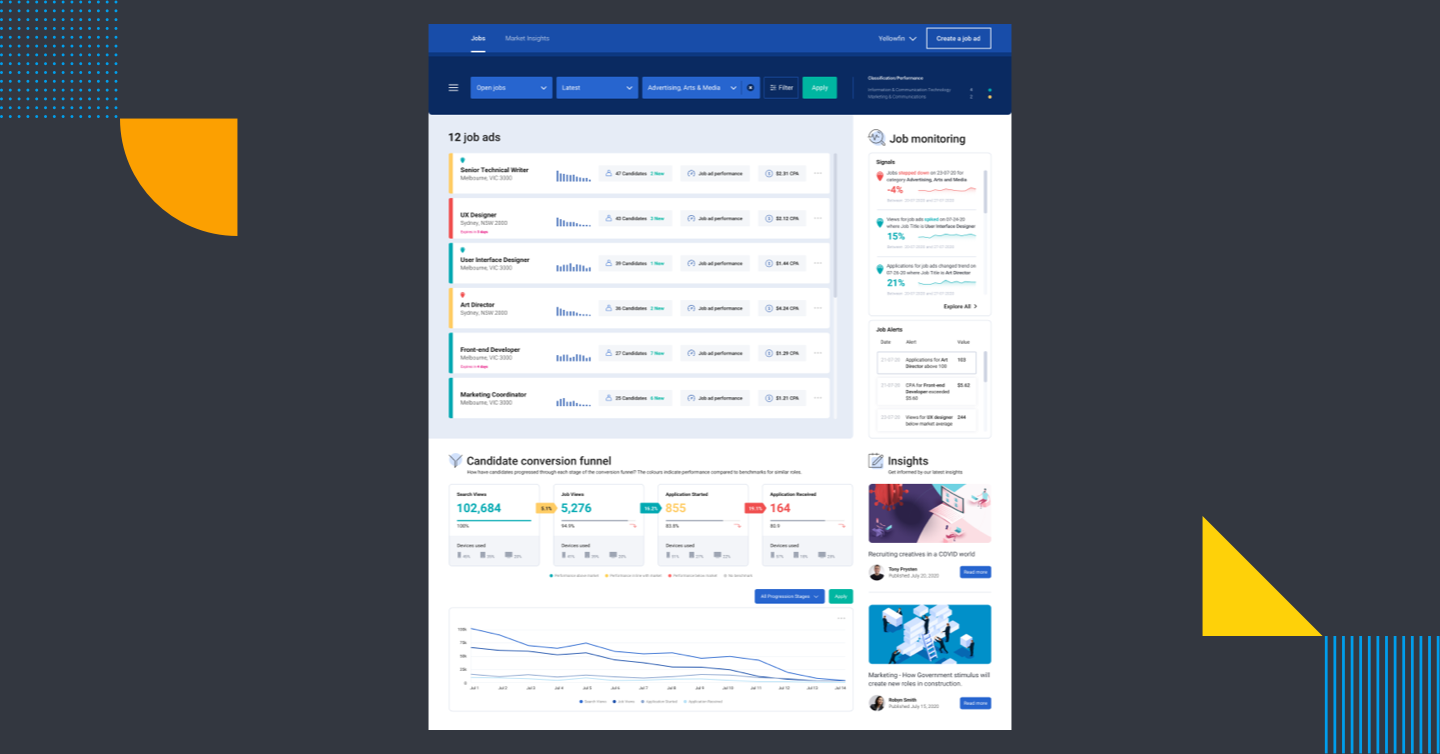
Thankfully, in the last few years embedded analytics has evolved significantly - from simply plugging in a dashboard module, to incorporating contextualized analytics that support and trigger user workflows from within an application - reducing these pains.
In this article, we explain what contextual analytics is and how as the next level of embedded analytics, it can add huge value by improving your user’s experience and increasing the business benefits your customers derive from using your application.
What does contextual analytics mean?
Contextual analytics is when dashboards and analytics solutions are embedded directly into a software application’s core workflows. This new approach delivers the benefits of analytics to your users, directly in the situational framework where decisions are made.
Traditionally, embedded analytics makes dashboards and reporting standalone modules in your app, meaning your users must switch away from their transactional environment whenever they need to investigate data or derive insight. Contextual analytics goes a step further by delivering the data needed to assist their decision-making at the point of consumption for the end-user, directly within the user interface and the transaction flow.
With analytics and transactions seamlessly blended together via tight integration of analytics and workflow, analytics becomes truly contextual and dynamic for your users.
Picture analytic components - charts, tables, metrics - sitting side by side on the screen with your app's transactional components, communicating bidirectionally with them. With one click, users gains instant, guided and dynamic insight, as they are continually guided in their decision-making by your application, while they work as normal.
This close merger brings about several new business opportunities.
- Retail store managers can instantly access daily demand forecasts and be presented with the option of creating shift schedules for next week
- Inventory managers can view trends, analyze stock and replenish orders without exiting the screen
- Processes involving routine data processing, whether in logistics, finance, manufacturing, or sales - can leverage on-the-fly alerts, prompts and insights
By definition, contextual analytics is more than a basic chart embedded on the page. The data, the visualization and the associated actions all need to work together in order to provide deeper insight and drive action - and this is what the newest phase of embedded analytics makes possible.
How does Contextual Analytics work?
The goal of contextual analytics is to maximize the business benefits end-users get from your app, by either supporting or triggering actions users make within those apps. To be effective, there are three criteria that define how contextual analytics needs to work.
- Visual components are embedded within a software application’s pages.
- Those visual components are synchronized with the core application.
- In combination, they support transactional workflows.
These embedded components can take two forms:
1. Predefined analytical paths: Where KPI numbers, line or bar charts or sophisticated dashboards covering a wide variety of visualizations are presented to the user based on their actions. For example: When viewing an individual customer record, the user can see a series of charts that highlight the history of that customer’s purchases. In a predefined path, every customer record will have their own mini dashboard or set of visualizations attached. The visualizations will be the same, but the data will be filtered uniquely for each customer. Product managers and product owners decide and integrate the most appropriate visualizations to support the end users’ workflow.
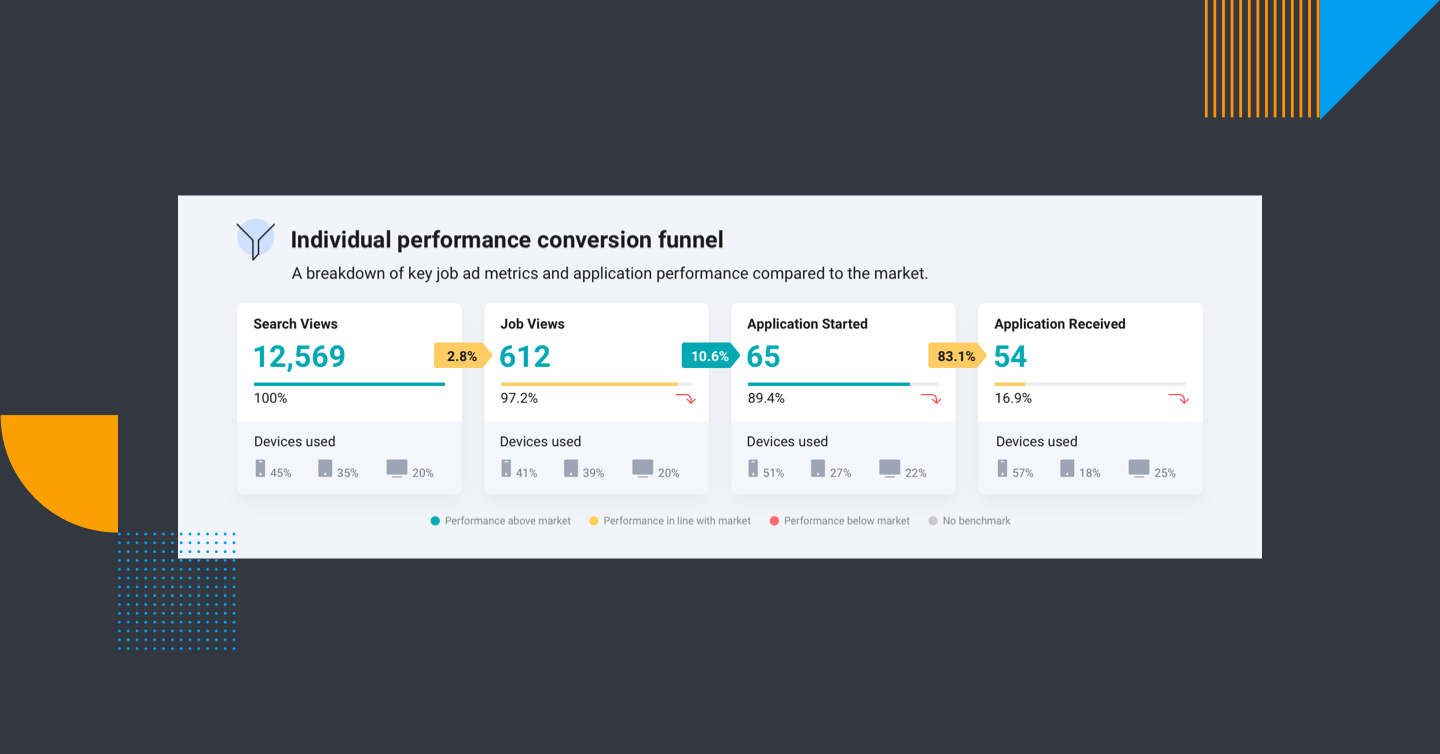
2. Dynamic analysis and alerts: Alerts or prompts that indicate either thresholds have been crossed or anomalies in a record have been discovered. In this case, only customers' records that have an alert associated with it will be highlighted; these prompt the user to explore further and take action. The nature of the alert or anomaly will present the user with a dynamic set of visualizations consistent with that alert type, but unique for that particular customer and insight. Product managers and owners decide and integrate the most appropriate alerts needed to support the user - however, automated processes run in the background to identify critical changes and surface these to end users as they occur.
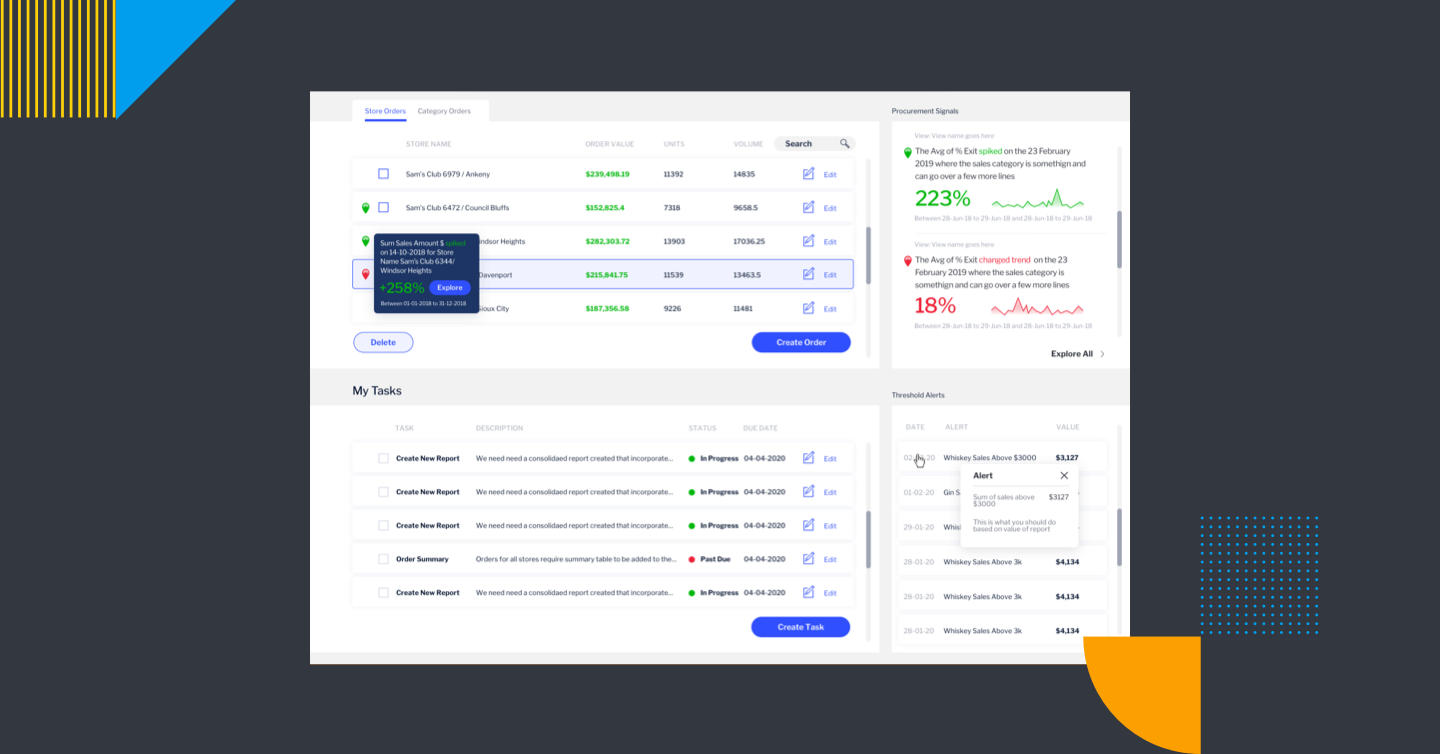
In either case, data being presented could be simple aggregations of transactional data through to the outcome of sophisticated data science models, like propensity to purchase models. The embedded analytical components must be synchronized with the rest of the page, so that if the context of the page changes, so does the data within the embedded analytic components.
A user may filter the main list of transactions on the page or click on a selected row in a table - these actions result in the analytics being updated to reflect the view that the user is now in. Synchronization is critical if the data presented to the user is to be truly considered contextual.
Lastly, contextual analytics should support transactional workflows. Monitoring overall performance and manual data analysis is best done within a standalone dashboard module or individual reports. With contextual analytics, the data presented is either:
- Supporting the current transaction workflow by providing more metrics or insights that specifically pertain to that transaction; or
- Trigger a new workflow via an alert, or suggested actions based on the output of a data science model
These modes, supporting and triggering, are not mutually exclusive and can be combined within a single analytics component. In addition, the workflows or actions can be bi-directional. They can occur in the core app or from within the analytics component, with the primary focus being the simplicity and intuitiveness of the end user experience.
Read more: A Developer's Guide to Contextual Analytics
Do you still need dashboards with contextual analytics?
None of this means dashboard-based analytics aren't still important.
Users will always still need to conduct their own broad or independent analysis by slicing and dicing data. Dashboards summarize the most important information at-a-glance, allow users to monitor overall performance, and enable them to drill into the detail behind the numbers. Most critically, they let the user control their own analysis.
This form of self-service business intelligence will always be critical to provide your users in your application - and dashboards are one of the best analytical tools for the job.
Contextual analytics, on the other hand, brings guided analysis to the user - something just not offered by dashboards alone. It takes them on an dynamic analytics journey, supports their decision-making within a transaction, or acts as the trigger for a decision - that’s the key difference, and why you need both capabilities for your embedded BI.
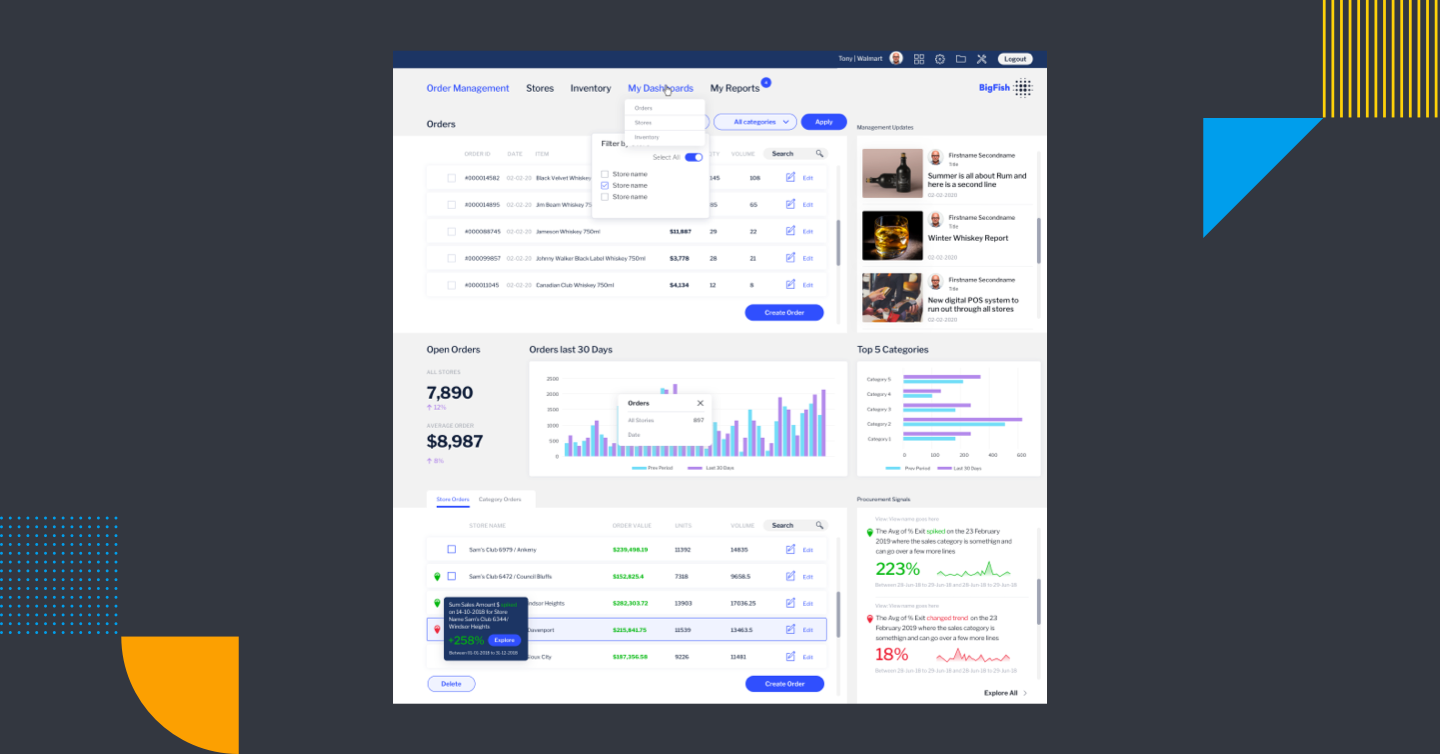
Contextual analytics: Why it's your next product innovation
Contextual analytics is ultimately about guided, dynamic insights that seamlessly integrate into your user’s workflow. With this type of powerful analytics, they don’t have to go elsewhere - or switch context - for the information they need to assist their decision-making. It empowers all users to be more effective in their work, by augmenting their analysis capability whilst transacting in your software application.
Embedding analytics into your software in this fashion creates significantly more value for your end-users, and also creates stickier user experience for your application overall.
Most importantly, contextual analytics augments your app's existing analytics. It doesn't replace it; you don't need to re-architect anything. Its purpose is to supercharge your software's analytical capabilities to the next level to meet your users' growing demand.
Now is the time to prepare for the next era of embedded BI with contextual analytics. By doing so, you highlight the power and the business benefits of your app, and elevate the value of your analytics and user experience.
You help and give your customers the power to act with certainty when using your software, while future-proofing your data and analytics capability for tomorrow.
White Paper: What is Contextual Analytics?
You've got a taste and now you're ready for more. Get ahead of the crowd and download our white paper 'What is Contextual Analytics?' for an in-depth view on contextual analytics and how to apply it to your business. All yours, 100% free - no email address required.